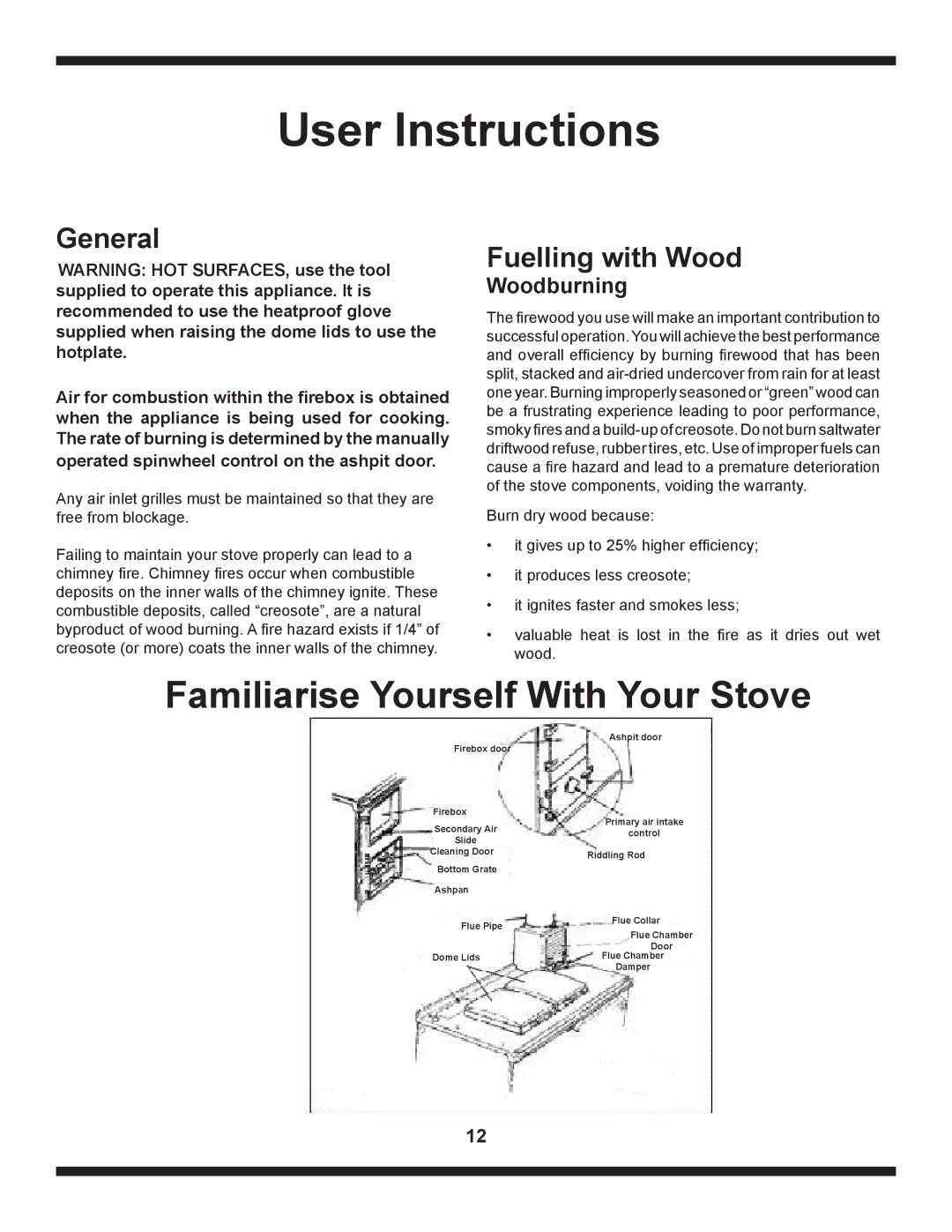
User Instructions
General
WARNING: HOT SURFACES, use the tool supplied to operate this appliance. It is recommended to use the heatproof glove supplied when raising the dome lids to use the hotplate.
Air for combustion within the firebox is obtained when the appliance is being used for cooking. The rate of burning is determined by the manually operated spinwheel control on the ashpit door.
Any air inlet grilles must be maintained so that they are free from blockage.
Failing to maintain your stove properly can lead to a chimney fire. Chimney fires occur when combustible deposits on the inner walls of the chimney ignite. These combustible deposits, called “creosote”, are a natural byproduct of wood burning. A fire hazard exists if 1/4” of creosote (or more) coats the inner walls of the chimney.
Fuelling with Wood
Woodburning
The firewood you use will make an important contribution to successful operation. You will achieve the best performance and overall efficiency by burning firewood that has been split, stacked and
Burn dry wood because:
•it gives up to 25% higher efficiency;
•it produces less creosote;
•it ignites faster and smokes less;
•valuable heat is lost in the fire as it dries out wet wood.
Familiarise Yourself With Your Stove
Firebox door | Ashpit door | |
| ||
Firebox | Primary air intake | |
Secondary Air | ||
control | ||
Slide | ||
| ||
Cleaning Door | Riddling Rod | |
| ||
Bottom Grate |
| |
Ashpan |
| |
Flue Pipe | Flue Collar | |
Flue Chamber | ||
| ||
| Door | |
Dome Lids | Flue Chamber | |
| Damper |
12
